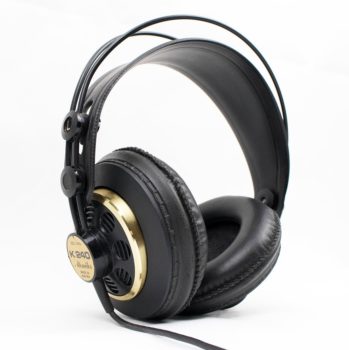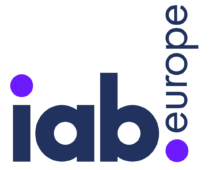Now & Next: Programmatic Audio
by Hugh Williams on 13th Feb 2017 in News

Audio ads are beginning to rival TV ads in terms of reach. The percentage of US adults who listen to podcasts has risen from 11% to 36% in the last decade; the number of monthly digital radio listeners has jumped from 93 million to 181 million, in half that time; and, Spotify broke the 100 million user mark in June last year (2016). The benefits of audio ads are there for all to see (or hear!). This edition of ExchangeWire’s Now & Next looks at what developments need to happen to make audio a stalwart in the programmatic budget.
Why audio?
Given the benefits of radio advertising, it is no wonder that online audio is considered by many the next frontier for programmatic ad buying. Radio leads all other platforms when it comes to weekly reach, connecting with 93% of the American population aged 12-54.
Beyond radio, audio offers a multitude of opportunities, the majority of which are through streaming. As of June 2016, Spotify boasts 100 million monthly active users (MAUs) – a rise of 85 million in four years. Of these, around 60% use the service for free and are, therefore, exposed to the platform’s ads. Audio streaming in the US rose by 76% between 2015 and 2016, but digital track and album sales both fell by over 20%. It is clear that the benefits in terms of reach are there for all to see.
The benefits of audio advertising extend beyond reach. With display ad fraud rife, and rightly a key concern for marketers, audio ads offer a way to avoid fraudulent activity, because the majority of bots prey on traditional display ads. Unlike display ads, audio adverts also have the added bonus that they are not competing against other adverts, with the lack of a screen, and because listeners cannot listen to other content while listening to an ad, engagement is higher.
These benefits haven’t gone unnoticed. It is estimated that, by June 2017, 11.6% of advertising budgets will be allocated towards digital audio, compared to only 5.5% in June 2015, and 7% in June 2016. As this happens, we will inevitably see a rise in RTB for audio ads, as media buyers look to create a more efficient buying process.
The state of the market
Some of the biggest players in the audio industry have taken steps to allow programmatic audio buys.
These include:
- Spotify have struck deals with Rubicon Project, The Trade Desk, and AppNexus to make their mobile audio inventory available for purchase in near-real time, through PMPs
- SoundCloud have boosted their programmatic capabilities only last month, in a partnership with Triton Digital, with additional targeting capabilities including listening habits, location, and age. Competition Pandora are looking to follow suit this year
In the past, a lack of supply has meant audio was one of last buying methods to be invested in programmatically. However, moves such as those discussed above by Spotify and SoundCloud, as well as Pandora’s plans to invest in programmatic capabilities, are ensuring that this is no longer an issue. This is not to say there are no obstacles standing in the way of programmatic audio’s development.
A buyer-seller disconnect
One challenge facing further growth of programmatic audio is that there is a disconnect in the perception of audio inventory. This is to say that, although audio publishers view their inventory as premium, this sentiment is not shared by advertisers, who don’t prioritise audio in their marketing mix. The majority of publishers are unwilling to put their inventory into an open exchange, with most of the space being sold directly or via a PMP. Meanwhile, digital audio and radio is only bought programmatically by 23% and 16% of media buyers respectively, highlighting that work needs to be done to pique the interest of advertisers if programmatic audio is to develop.
This could change, as agencies increasingly see programmatic audio as integral for targeting on mobile. Not only an opportunity to diversify audience buys, it offers hyper-contextual data around what people are doing (whether they are working out, at a party, on their way to work, etc.), as well as providing insight into customers’ moods, which no other data can offer.
However, better targeting doesn’t necessarily bring value by itself, the ability to measure or attribute the spend to tangible, sales-based KPIs is a must-have. At present, advertisers are holding off investing heavily in programmatic audio as the format doesn’t allow attribution to specific purchase or intent KPIs, and offline-to-online attribution is still underdeveloped.
Programmatic audio extends beyond radio and music streaming, to mediums such as podcasts. However, these are not immune to the challenges faced by other audio formats. The biggest challenge facing programmatic buying on podcasts, is that it will ruin the authenticity of host-read podcast ads (adverts read by the presenter of a particular podcast). These have strong engagement rates, as the listener has built up trust with the host and podcast, with ads in the US reaching CPMs as high as USD$80 (£64) (compared to USD$3 (£2) for network radio ads).
The future
So, with all these challenges facing programmatic audio, can the format find its place in the media buying landscape?
The next couple of years will be pivotal to programmatic audio’s future. The data opportunities within the format are huge. Its consumption produces huge amounts of data across time of day, location, device, operator, age and gender. It also gives unique insights the mood of the user at any time, by tracking genres they are listening to, and user activity at any given time (such as walking to work, working out, or relaxing at home).
To ensure audio’s programmatic future, publishers need to share this data. This will help boost advertiser interest in the format, and get it on media professionals’ radars in the near future. With so much data available to advertisers, they are striving to select the most relevant, and audio needs to show it can capture how a listener is feeling through its data.
It is likely that programmatic spend will increase on all audio formats (expect perhaps podcasts, which value their host-read ads too highly). However, the fact that audio ads do not compete for consumer attention makes it improbable that publishers will shift their perceptions of their inventory to anything less than premium. This could hinder spending growth, with programmatic display and TV remaining cheaper options, but the lack of competition for attention, low fraud rates and wide reach, mean that programmatic audio will take hold as a mainstay in the ‘premium’ budget of advertisers.








Follow ExchangeWire